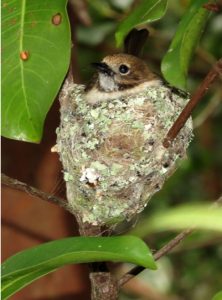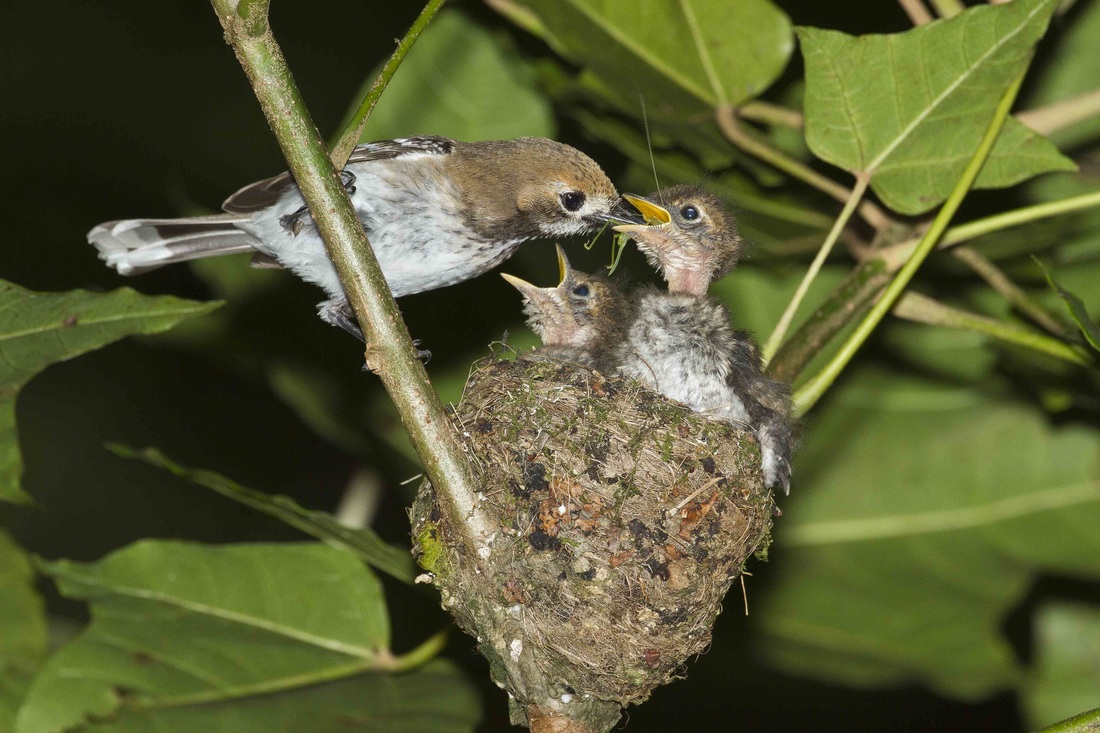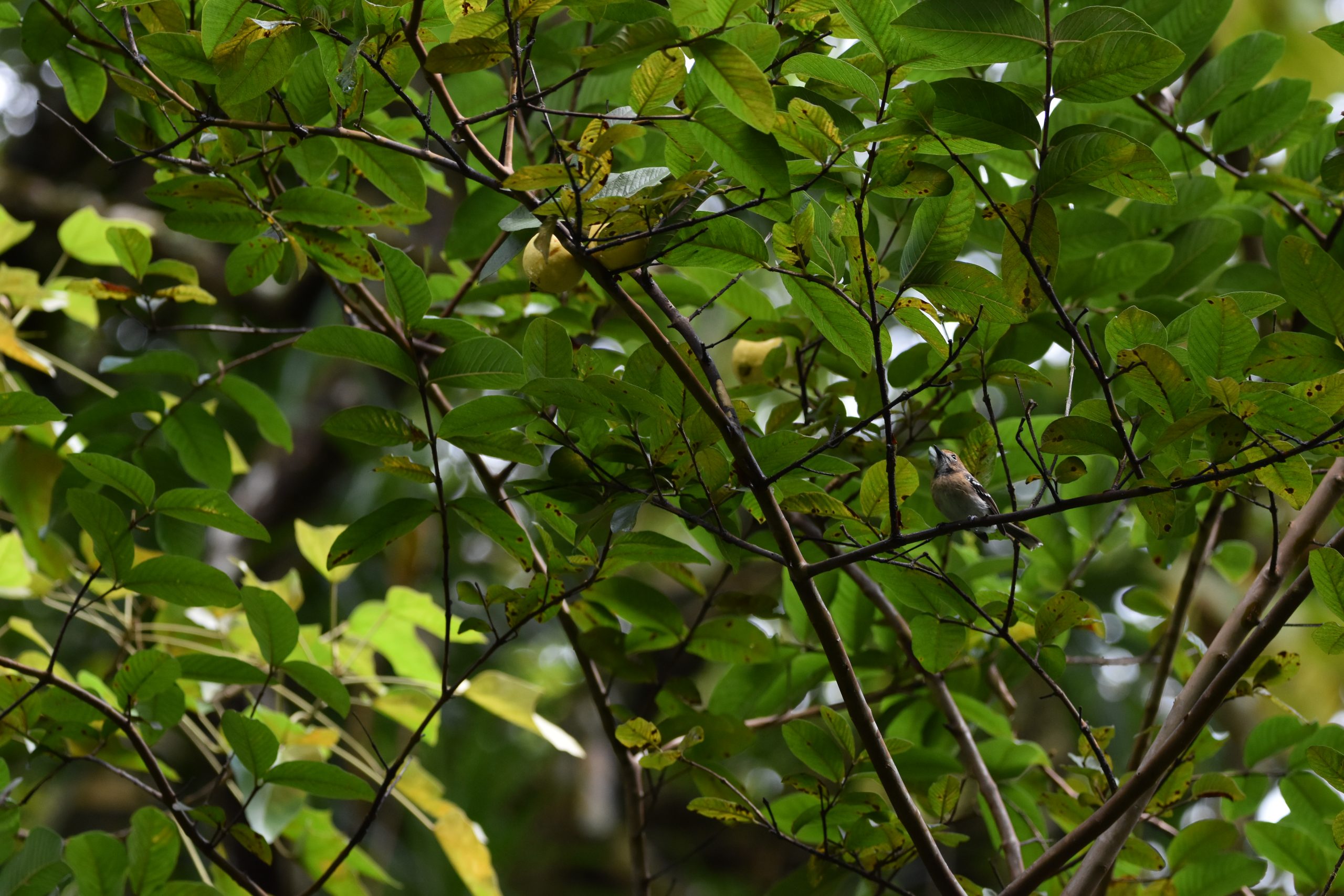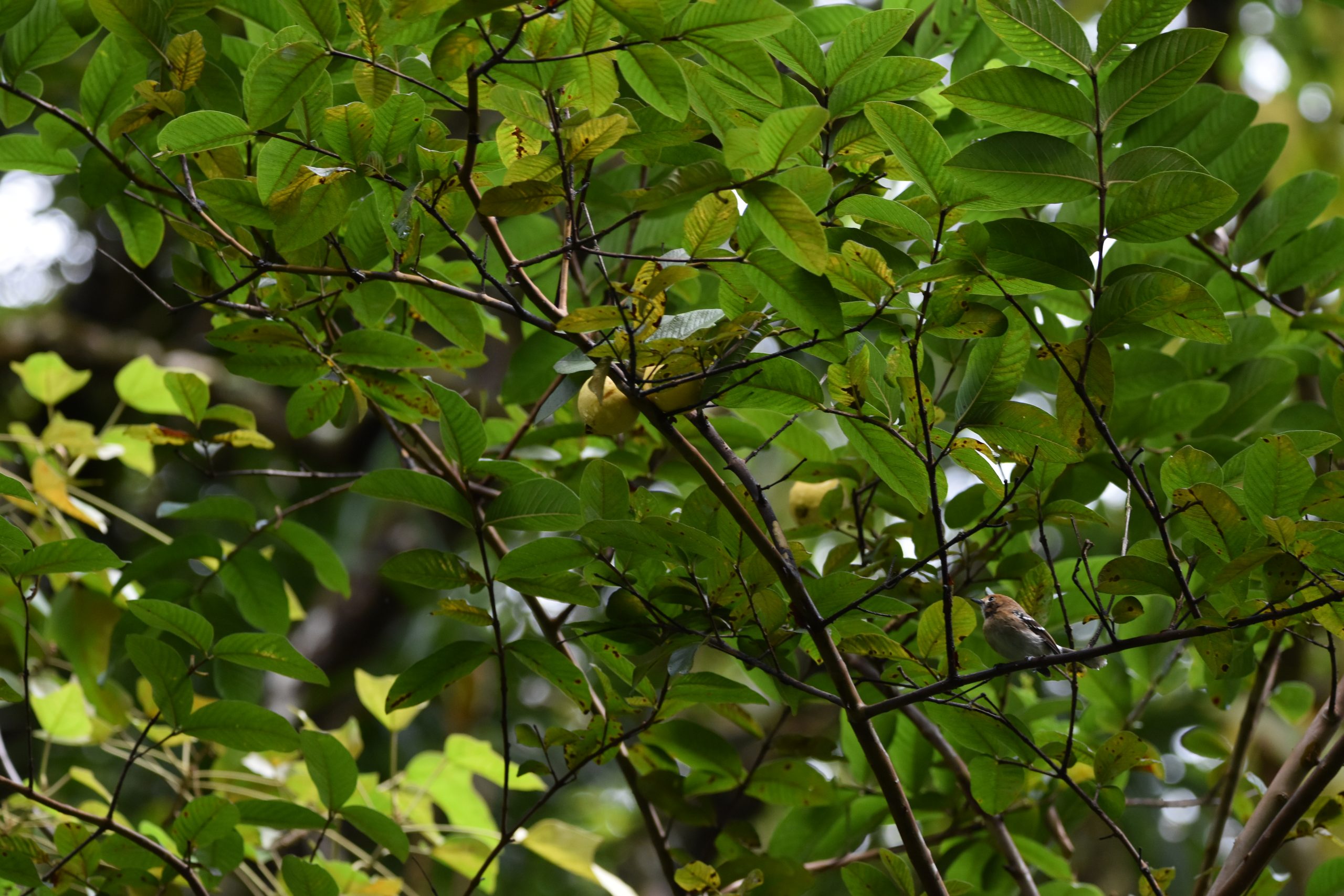Oʻahu ʻElepaio

Names
- ʻŌlelo Hawaiʻi: O‘ahu ‘elepaio
- Scientific: Chasiempis ibidis
Song
Conservation Status
- Federally Listed as Endangered
- State Listed as Endangered
- State Recognized as Endemic
- NatureServe Heritage Rank G1—Critically Imperiled
- IUCN Red List Ranking—Endangered
- Revised Recovery Plan for Hawaiian Forest Birds —USFWS 2006
Species Information

Oʻahu ʻelepaio inside nest.
The O‘ahu ‘elepaio is a small, adaptable monarch flycatcher (Family: Monarchiade) endemic to the island of O‘ahu. Other species of ‘Elepaio occur on Kaua‘i (C. sclateri) and the island of Hawai‘i (C. sandwichensis). Males and females are dark brown above and white below with variable light brown streaks on breast and conspicuous white wing bars, tail feather tips, and throat. Both sexes have variable amounts of blacking markings, but males tend to have more. The bird’s name is derived from its primary song which is a shrill whistle given only by males. On the island of Hawai‘i, ‘elepaio use virtually all available substrates for foraging including the ground, logs, rock crevices, snags, and all parts of tress. ‘Elepaio capture a wide range of arthropod prey by flycatching, gleaning while either perched or hovering, and direct pursuit. Foraging maneuvers vary depending on plant species from which prey is being captured, and habitat. O‘ahu ‘elepaio use a variety of native and non-native trees for foraging. Pairs remain together throughout the year, and long-term pair bonds are common. Breeding season on O‘ahu is January through July compared to March through August on the island of Hawai‘i. Unlike Hawaiian honeycreepers, both males and females participate almost equally in all aspects of rearing. Finely woven cup nests are built in a variety of native and non-native trees. Clutch size is usually two and second and third nests are attempted after failures, but rarely is a second nest attempted if the first is successful. Fecundity is low even in areas were predators are controlled. Young are fed by parents for at least a month, but remain on their natal territory for up to ten months which may allow young birds to hone their foraging skills.
Distribution
Occurs in the Ko‘olau Range between 100 to 550 meters (325 – 1,800 feet) elevation, and in the Wai‘anae Range between 500 to 850 meters (1,625 – 2,775 feet) elevation. Dispersal between the ranges is unlikely. Each subpopulation consists of several populations; the amount of dispersal among these is likely low. Original distribution likely included all forested areas of O‘ahu.
Habitat
Occurs in a variety of forest types and across a range of elevations, primarily in valleys and particularly those with tall riparian vegetation, a continuous canopy, and dense understory. Common native plant species where ‘elepaio occur include papala kēpau (Pisonia umbellifera), lama (Diospyros sandwicensis), māmaki (Pipturus albidus), kaulu (Sapindus oahuensis) and ‘āla‘a (Pouteria sandiwicensis). Common introduced plants in ‘elepaio habitat include strawberry guava (Psidium cattleianum), common guava (P. guajavai), kukui (Aleurites moluccana), mango (Mangifera indica), and Christmas berry (Schinus terebinthifolius). O‘ahu ‘elepaio are not found in very wet forests, on windswept summits, or in very dry scrubland. Much of their current range is managed by the U.S. military or by the State of Hawai‘i.
Threats
O‘ahu ‘elepaio are likely susceptible to the same factors that threaten other native Hawaiian forest birds, including loss and degradation of habitat, predation by introduced mammals, and disease. For O‘ahu ‘elepaio, the following threats are of particular concern:
- Predation. Predation by black rats (Rattus rattus) have been implicated in the loss of nests and death of adult females. Rat control in O‘ahu populations resulted in large increases in nest success and in survival of adult females.
- Low reproductive potential. The species’ low annual productivity, even in quality habitat, makes it very susceptible to factors that reduce population size.
- Disease. Avian pox (Poxvirus avium) reduces both annual survival and reproductive success of birds with active pox lesions compared to healthy birds; no information on the effect of avian malaria (Plasmodium relictum).
- Population size. Small populations are plagued by a variety of potentially irreversible problems that fall into three categories: demographic, stochastic, and genetic; the former are usually most problematic. Demographic factors include skewed sex ratios and stochastic factors include natural disasters. Habitat fragmentation exacerbates demographic and genetic problems.
- Fire. Wildfires resulting from military activities threaten two populations.
Plans & Projects
- Oʻahu ʻElepaio Recovery Project
Additional Resources
For more information and references visit the DLNR State Wildlife Action Plan factsheets. DOFAWʻs species pages and State Wildlife Action Plan fact sheets are provided for general information and are not meant to be a citable, original source of data. If you are a student, researcher, or writer looking for a citable source, please explore the references below or find other original data sources, rather than citing these webpages. The references below were provided by the authors of the State Wildlife Action Plan fact sheets at the time of drafting:
- IUCN Red List of Threatened Species. 2015. Version 2014.3. Available at: www.iucnredlist.org. (Accessed May 2015).
- VanderWerf EA. 1998. ‘Elepaio (Chasiempis sandwichensis). In The Birds of North America, No. 344 (Poole A, Gill F, editors.). Philadelphia, (PA): The Academy of Natural Sciences; and Washington DC: The American Ornithologists’ Union.
- VanderWerf EA, Rohrer JL, Smith DG, Burt MD. 2001. Current distribution and abundance of the O’ahu ‘elepaio. Wilson Bulletin 113:10-16.
- VanderWerf EA, Lohr MT, Titmus AJ, Taylor PE, Burt MD. 2013. Current distribution and abundance of the O‘ahu Elepaio (Chasiempis ibidis). Wilson Journal of Ornithology 125:600-608.
- U.S. Fish and Wildlife Service. 2006. Revised Recovery plan for Hawaiian forest birds. Portland, (OR): U.S. Fish and Wildlife Service.



